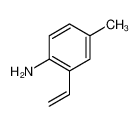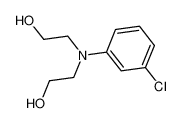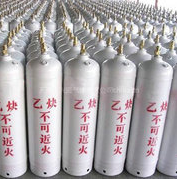1.Identification
1.1 GHS Product identifier
| Product name | acetylene |
|---|
1.2 Other means of identification
| Product number | - |
|---|---|
| Other names | Welding Gas |
1.3 Recommended use of the chemical and restrictions on use
| Identified uses | For industry use only. Agricultural chemicals (non-pesticidal),Fuels and fuel additives,Intermediates,Processing aids, not otherwise listed |
|---|---|
| Uses advised against | no data available |
1.4 Supplier's details
| Company | MOLBASE (Shanghai) Biotechnology Co., Ltd. |
|---|---|
| Address | Floor 4 & 5, Building 12, No. 1001 North Qinzhou Road, Xuhui District, Shanghai, China |
| Telephone | +86(21)64956998 |
| Fax | +86(21)54365166 |
1.5 Emergency phone number
| Emergency phone number | +86-400-6021-666 |
|---|---|
| Service hours | Monday to Friday, 9am-5pm (Standard time zone: UTC/GMT +8 hours). |
2.Hazard identification
2.1 Classification of the substance or mixture
Gases under pressure: Compressed gas
Flammable gases, Category 1
2.2 GHS label elements, including precautionary statements
| Pictogram(s) |   |
|---|---|
| Signal word | Danger |
| Hazard statement(s) | H220 Extremely flammable gas |
| Precautionary statement(s) | |
| Prevention | P210 Keep away from heat, hot surfaces, sparks, open flames and other ignition sources. No smoking. |
| Response | P377 Leaking gas fire: Do not extinguish, unless leak can be stopped safely. P381 In case of leakage, eliminate all ignition sources. |
| Storage | P410+P403 Protect from sunlight. Store in a well-ventilated place. P403 Store in a well-ventilated place. |
| Disposal | none |
2.3 Other hazards which do not result in classification
none
3.Composition/information on ingredients
3.1 Substances
| Chemical name | Common names and synonyms | CAS number | EC number | Concentration |
|---|---|---|---|---|
| acetylene | acetylene | 74-86-2 | none | 100% |
4.First-aid measures
4.1 Description of necessary first-aid measures
General advice
Consult a physician. Show this safety data sheet to the doctor in attendance.
If inhaled
Fresh air, rest. Artificial respiration may be needed. Refer for medical attention.
In case of skin contact
Wash off with soap and plenty of water. Consult a physician.
In case of eye contact
First rinse with plenty of water for several minutes (remove contact lenses if easily possible), then refer for medical attention.
If swallowed
Never give anything by mouth to an unconscious person. Rinse mouth with water. Consult a physician.
4.2 Most important symptoms/effects, acute and delayed
Headache, dizziness and loss of consciousness may occur. Death from ``smothering'' may occur if oxygen content of the air is severely reduced by dilution with acetylene. (USCG, 1999)
4.3 Indication of immediate medical attention and special treatment needed, if necessary
Immediate first aid: Ensure that adequate decontamination has been carried out. If patient is not breathing, start artificial respiration, preferably with a demand valve resuscitator, bag-valve-mask device, or pocket mask, as trained. Perform CPR if necessary. Immediately flush contaminated eyes with gently flowing water. Do not induce vomiting. If vomiting occurs, lean patient forward or place on the left side (head-down position, if possible) to maintain an open airway and prevent aspiration. Keep patient quiet and maintain normal body temperature. Obtain medical attention. /Aliphatic hydrocarbons and related compounds/
5.Fire-fighting measures
5.1 Extinguishing media
Suitable extinguishing media
Stop flow of gas before extinguishing fire. Use water spray to keep fire-exposed containers cool. Approach fire from upwind to avoid hazardous vapors and toxic decomposition products. Fight fire from protected location or maximum possible distance. Use water spray, dry chemical, form, or carbon dioxide. /Acetylene, dissolved/
5.2 Specific hazards arising from the chemical
Behavior in Fire: May explode in fire (USCG, 1999)
5.3 Special protective actions for fire-fighters
Wear self-contained breathing apparatus for firefighting if necessary.
6.Accidental release measures
6.1 Personal precautions, protective equipment and emergency procedures
Use personal protective equipment. Avoid dust formation. Avoid breathing vapours, mist or gas. Ensure adequate ventilation. Evacuate personnel to safe areas. Avoid breathing dust. For personal protection see section 8.
6.2 Environmental precautions
Remove all ignition sources. Evacuate danger area! Consult an expert! Personal protection: self-contained breathing apparatus. Ventilation.
6.3 Methods and materials for containment and cleaning up
Evacuate danger area! Consult an expert! Ventilation. Remove all ignition sources. (Extra personal protection: self-contained breathing apparatus).
7.Handling and storage
7.1 Precautions for safe handling
Avoid contact with skin and eyes. Avoid formation of dust and aerosols. Avoid exposure - obtain special instructions before use.Provide appropriate exhaust ventilation at places where dust is formed. For precautions see section 2.2.
7.2 Conditions for safe storage, including any incompatibilities
Fireproof. See Chemical Dangers. Cool.Keep container in a cool, well-ventilated area. Keep container tightly closed and sealed until ready for use. Avoid all possible sources of ignition (spark or flame). Segregate from oxidizing materials. Cylinders should be stored upright, with valve protection cap in place, and firmly secured to prevent falling or being knocked over. Cylinder temperatures should not exceed 52 degC (125 degF).
8.Exposure controls/personal protection
8.1 Control parameters
Occupational Exposure limit values
Recommended Exposure Limit: Ceiling Value: 2500 ppm (2662 mg/cu m).
Biological limit values
no data available
8.2 Appropriate engineering controls
Handle in accordance with good industrial hygiene and safety practice. Wash hands before breaks and at the end of workday.
8.3 Individual protection measures, such as personal protective equipment (PPE)
Eye/face protection
Safety glasses with side-shields conforming to EN166. Use equipment for eye protection tested and approved under appropriate government standards such as NIOSH (US) or EN 166(EU).
Skin protection
Wear impervious clothing. The type of protective equipment must be selected according to the concentration and amount of the dangerous substance at the specific workplace. Handle with gloves. Gloves must be inspected prior to use. Use proper glove removal technique(without touching glove's outer surface) to avoid skin contact with this product. Dispose of contaminated gloves after use in accordance with applicable laws and good laboratory practices. Wash and dry hands. The selected protective gloves have to satisfy the specifications of EU Directive 89/686/EEC and the standard EN 374 derived from it.
Respiratory protection
Wear dust mask when handling large quantities.
Thermal hazards
no data available
9.Physical and chemical properties
| Physical state | A colorless gas with a faint garlic-like odor. |
|---|---|
| Colour | Colorless gas ... [Note: Shipped under pressure dissolved in acetone] |
| Odour | Not unpleasant odor unless impure (due to phosphine) |
| Melting point/ freezing point | -88ºC |
| Boiling point or initial boiling point and boiling range | -28ºC |
| Flammability | Flammable GasExtremely flammable. |
| Lower and upper explosion limit / flammability limit | Lower flammable limit: 2.5% by volume; Upper flammable limit: 100% by volume |
| Flash point | -18ºC |
| Auto-ignition temperature | 305°C (USCG, 1999) |
| Decomposition temperature | no data available |
| pH | no data available |
| Kinematic viscosity | no data available |
| Solubility | In water:0.106 g/100 mL |
| Partition coefficient n-octanol/water (log value) | log Kow = 0.37 |
| Vapour pressure | 44.2 atm (NIOSH, 2016) |
| Density and/or relative density | 0.568 g/cm3 |
| Relative vapour density | 0.91 (Air = 1) |
| Particle characteristics | no data available |
10.Stability and reactivity
10.1 Reactivity
no data available
10.2 Chemical stability
Stability during transport: Stable as shipped.
10.3 Possibility of hazardous reactions
Very dangerous fire hazard when exposed to heat or flame ...The gas mixes well with air, explosive mixtures are easily formed.ACETYLENE reacts with alkali metals, forming hydrogen gas. Acetylene can react explosively with bromine [Von Schwartz 1918. p.142]. Acetylene forms a sensitive acetylide when passed into an aqueous solution of mercuric nitrate [Mellor 4:933. 1946-47]. It reacts with silver, copper and lead to form sensitive, explosive salts. Since acetylene is endothermic and effectively a reducing agent, its reaction with oxidants can be very violent (examples: calcium hypochlorite, nitric acid, nitrogen oxide, ozone, trifluoromethyl hypofluorite, etc.). Contact of very cold liquefied gas with water may result in vigorous or violent boiling of the product and extremely rapid vaporization, due to the large temperature differences involved. If the water is hot, there is the possibility that a liquid "superheat" explosion may occur. Pressures may build to dangerous levels if liquid gas contacts water in a closed container [Handling Chemicals Safely 1980]. Acetylene and ammonia can form explosive silver salts in contact with Ag. (Renner, Hermann, Gunther Schlamp. "Silver, Silver Compounds, and Silver Alloys." Ullmann's Encyclopedia of Industrial Chemistry. Wiley-VCH Verlag GmbH & Co. KGaA. 2001.).
10.4 Conditions to avoid
no data available
10.5 Incompatible materials
Mixture with air containing between 3-82% gas is explosive. Contact with /bleaching powder may lead to formation of explosive chloroacetylenes. Finely divided /cobalt/ metal decomposes and polymerizes acetylene on contact, becoming incandescent. Copper metal forms explosive compounds with acetylene. If warmed in air or oxygen, or on impact, copper acetylides may explode in subsequent contact with acetylene. Interaction with /halogens/ can be violent or explosive. Contact of acetylene with concentrated nitric acid in presence of mercury forms explosive trinitromethane or tetranitromethane if sulfuric acid is subsequently added. Mixture with /nitric oxide products/ will ignite at +30-50°C. Mixtures with /oxygen/ are very explosive even at very low oxygen concentrations (<2.5%). Molten /potassium/ ignites in acetylene, then explodes. /Silver/ forms explosive compounds with acetylene. Interaction with /trifluoromethyl hypofluorite/, in absence of nitrogen as diluent, is explosive on mixing.
10.6 Hazardous decomposition products
/Acetylene/, the extremely endothermic gas ... may decomposed explosively in absence of air ... /and/ readily escalates to detonation in tubular vessels. This type of explosive decomposition has been experienced in a 7 mile acetylene pipeline system ... Accidental local heating to 185°C or above of part of the wall (as little as 6 sq cm may be enough) of a cylinder containing acetylene may lead to the development of an extremely dangerous situation. At this temperature, exothermic and self-sustaining decomposition of (endothermic) acetylene may set in, and if not stopped by rapid and effective cooling (large volume water spray), the cylinder may explode without warning. Flame flash-back into a cylinder from a wrongly adjusted and/or damaged welding or cutting torch can cause the same effect ...
11.Toxicological information
Acute toxicity
- Oral: no data available
- Inhalation: no data available
- Dermal: no data available
Skin corrosion/irritation
no data available
Serious eye damage/irritation
no data available
Respiratory or skin sensitization
no data available
Germ cell mutagenicity
no data available
Carcinogenicity
no data available
Reproductive toxicity
no data available
STOT-single exposure
no data available
STOT-repeated exposure
no data available
Aspiration hazard
no data available
12.Ecological information
12.1 Toxicity
- Toxicity to fish: no data available
- Toxicity to daphnia and other aquatic invertebrates: no data available
- Toxicity to algae: no data available
- Toxicity to microorganisms: no data available
12.2 Persistence and degradability
AEROBIC: Acetylene, present at 1.6 mg/L, reached 0% of its theoretical BOD in 28 days using an activated sludge inoculum in the Japanese MITI test(1).
12.3 Bioaccumulative potential
An estimated BCF of 3 was calculated in fish for acetylene(SRC), using a log Kow of 0.37(1) and a regression-derived equation(2). According to a classification scheme(2), this BCF suggests the potential for bioconcentration in aquatic organisms is low(SRC).
12.4 Mobility in soil
The Koc of acetylene is estimated as 2(SRC), using a log Kow of 0.37(1) and a regression-derived equation(2). According to a classification scheme(3), this estimated Koc value suggests that acetylene is expected to have very high mobility in soil. Less than 1 ppm of gas acetylene was absorbed to dry soil and a maximum of 90 ppm of acetylene was absorbed to moist soil samples taken from 6 soil samples from Oregon, Iowa and Saskatchewan, Canada(4).
12.5 Other adverse effects
no data available
13.Disposal considerations
13.1 Disposal methods
Product
The material can be disposed of by removal to a licensed chemical destruction plant or by controlled incineration with flue gas scrubbing. Do not contaminate water, foodstuffs, feed or seed by storage or disposal. Do not discharge to sewer systems.
Contaminated packaging
Containers can be triply rinsed (or equivalent) and offered for recycling or reconditioning. Alternatively, the packaging can be punctured to make it unusable for other purposes and then be disposed of in a sanitary landfill. Controlled incineration with flue gas scrubbing is possible for combustible packaging materials.
14.Transport information
14.1 UN Number
| ADR/RID: UN1001 | IMDG: UN1001 | IATA: UN1001 |
14.2 UN Proper Shipping Name
| ADR/RID: ACETYLENE, DISSOLVED |
| IMDG: ACETYLENE, DISSOLVED |
| IATA: ACETYLENE, DISSOLVED |
14.3 Transport hazard class(es)
| ADR/RID: 2.1 | IMDG: 2.1 | IATA: 2.1 |
14.4 Packing group, if applicable
| ADR/RID: unknown | IMDG: unknown | IATA: unknown |
14.5 Environmental hazards
| ADR/RID: no | IMDG: no | IATA: no |
14.6 Special precautions for user
no data available
14.7 Transport in bulk according to Annex II of MARPOL 73/78 and the IBC Code
no data available
15.Regulatory information
15.1 Safety, health and environmental regulations specific for the product in question
| Chemical name | Common names and synonyms | CAS number | EC number |
|---|---|---|---|
| acetylene | acetylene | 74-86-2 | none |
| European Inventory of Existing Commercial Chemical Substances (EINECS) | Listed. | ||
| EC Inventory | Listed. | ||
| United States Toxic Substances Control Act (TSCA) Inventory | Listed. | ||
| China Catalog of Hazardous chemicals 2015 | Listed. | ||
| New Zealand Inventory of Chemicals (NZIoC) | Listed. | ||
| Philippines Inventory of Chemicals and Chemical Substances (PICCS) | Listed. | ||
| Vietnam National Chemical Inventory | Listed. | ||
| Chinese Chemical Inventory of Existing Chemical Substances (China IECSC) | Listed. | ||
16.Other information
Information on revision
| Creation Date | Aug 14, 2017 |
|---|---|
| Revision Date | Aug 14, 2017 |
Abbreviations and acronyms
- CAS: Chemical Abstracts Service
- ADR: European Agreement concerning the International Carriage of Dangerous Goods by Road
- RID: Regulation concerning the International Carriage of Dangerous Goods by Rail
- IMDG: International Maritime Dangerous Goods
- IATA: International Air Transportation Association
- TWA: Time Weighted Average
- STEL: Short term exposure limit
- LC50: Lethal Concentration 50%
- LD50: Lethal Dose 50%
- EC50: Effective Concentration 50%
References
- IPCS - The International Chemical Safety Cards (ICSC), website: http://www.ilo.org/dyn/icsc/showcard.home
- HSDB - Hazardous Substances Data Bank, website: https://toxnet.nlm.nih.gov/newtoxnet/hsdb.htm
- IARC - International Agency for Research on Cancer, website: http://www.iarc.fr/
- eChemPortal - The Global Portal to Information on Chemical Substances by OECD, website: http://www.echemportal.org/echemportal/index?pageID=0&request_locale=en
- CAMEO Chemicals, website: http://cameochemicals.noaa.gov/search/simple
- ChemIDplus, website: http://chem.sis.nlm.nih.gov/chemidplus/chemidlite.jsp
- ERG - Emergency Response Guidebook by U.S. Department of Transportation, website: http://www.phmsa.dot.gov/hazmat/library/erg
- Germany GESTIS-database on hazard substance, website: http://www.dguv.de/ifa/gestis/gestis-stoffdatenbank/index-2.jsp
- ECHA - European Chemicals Agency, website: https://echa.europa.eu/



















-
-

-
-
-

-
-
-

-
-
-

-
-
-

-
-
-

-
-
-

-
-
-

-
-
-

-
-
-

-
More Suppliers>>Hangzhou J&H Chemical Co., Ltd.
CHINA
Purity: 98%
Lead Time: 7 Day(s)
Price: -
Hangzhou DayangChem Co., Ltd
CHINA
Purity: 98%
Lead Time: 7 Day(s)
Price: -
Skyrun Industrial Co., Limited
CHINA
Purity: 99%
Lead Time: 7 Day(s)
Price: -
Henan Coreychem Co.,Ltd
CHINA
Purity: 98%
Lead Time: 3 Day(s)
Price: -
Zhongshan Grubo Gas Co., Ltd.
CHINA
Purity: 99.999%
Lead Time: 14 Day(s)
Price: Min $75 /
Chengdu Changzheng Glass Co.,Ltd.
CHINA
Purity: 96%
Lead Time: 5 Day(s)
Price: -
Quzhou Ruierfeng Chemical Co., Ltd.
CHINA
Purity: 96%
Lead Time: 7 Day(s)
Price: -
ZHEJIANG JIANYE CHEMICAL CO.,LTD.
CHINA
Purity: 99%
Lead Time: 15 Day(s)
Price: -
Shanghai haiqu Chemical Co.,ltd
CHINA
Purity: 95%
Lead Time: 0 Day(s)
Price: -
Shenzhen Yajiaite Industrial Co., Ltd.
CHINA
Purity: 95%
Lead Time: 7 Day(s)
Price: -